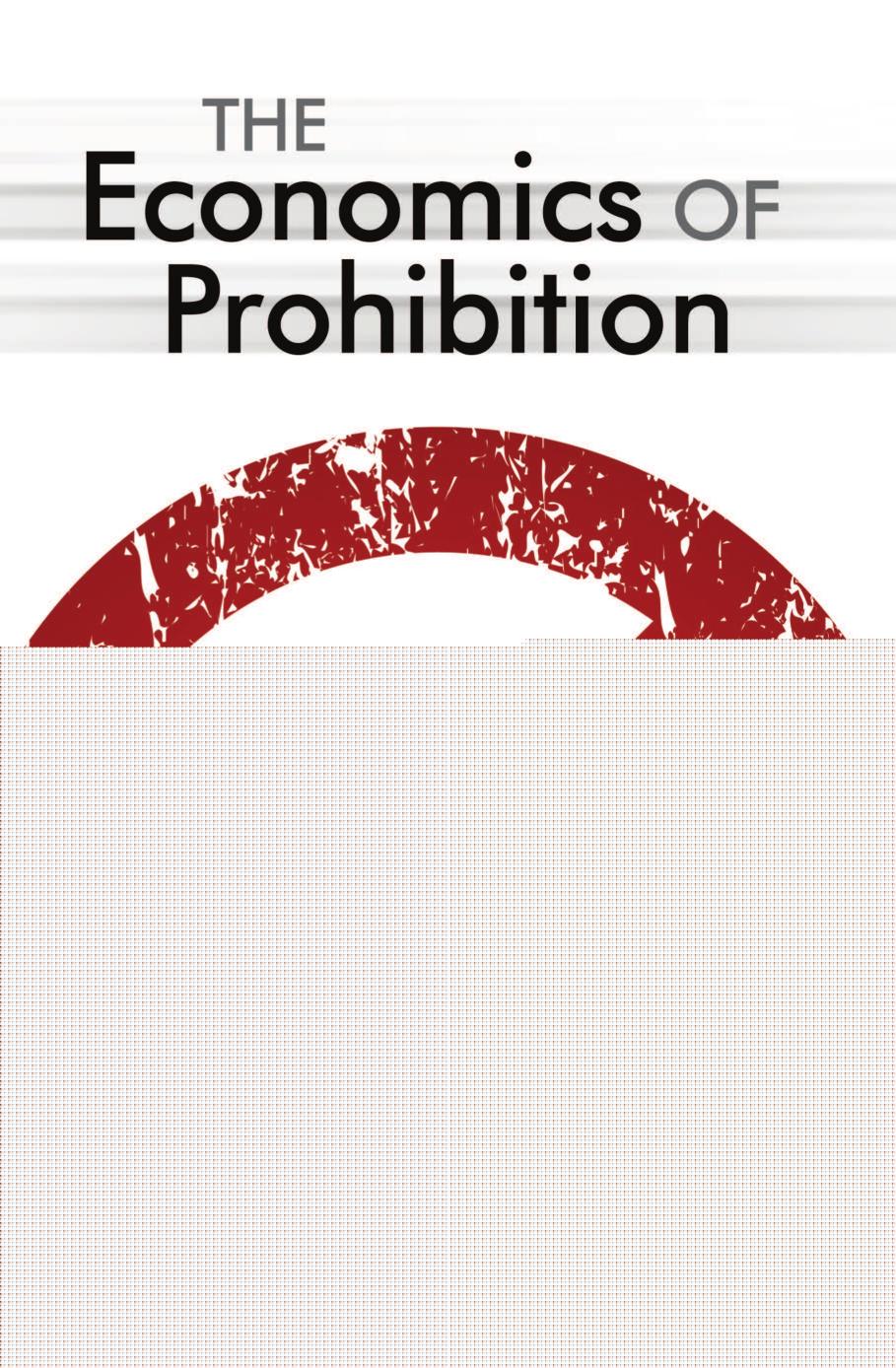The Economics of Prohibition by Mark Thornton

Author:Mark Thornton [Thornton, Mark]
Language: eng
Format: epub, pdf
ISBN: 9781610164658
Publisher: University of Utah Press
Published: 1991-11-01T00:00:00+00:00
PROHIBITION AS A TAX
Economists have drawn the analogy of taxation to represent the effects of prohibition. The enforcement of prohibition creates risk for suppliers of illegal products. This risk acts as a tax, thus increasing price and reducing output.
The theorem developed by Armen A. Alchian and William R. Allen (1964) provides a good example of how prohibition can affect the attributes of illegal drugs. In the original application of the theorem, constant transportation cost was applied to apples of various prices, resulting in a change in relative prices favoring the apples of higher price. More higher-priced apples are thus shipped out (table 3).2 A similar change in relative prices should occur with prohibition if the prohibition “tax” is similar to a transportation charge or unit tax.
Yoram Barzel (1976) examined the effect of per-unit and ad valorem taxes on product attributes, after-tax price, and overall quality. His analysis indicated that depending on the type, taxation does affect the attribute composition of the product and therefore may be useful for understanding prohibition’s influence on potency. A tax, depending on the type, results in a price and an output that differ from those predicted by the constant-quality model. According to Barzel, “Commodities as transacted in the market are complex, and the margins with respect to which optimization takes place are numerous. Because commodity tax statutes will not generally cover all these margins, any tax will induce multiple changes not only in resource allocation away from the taxed commodity and into others but also in the ‘quality’ of the commodity and how it is transacted, a substitution away from the taxed attributes and into the others” (1195). A per-unit tax imposed on commodity X containing n characteristics will induce inclusion of more of the untaxed characteristics. The commodity is defined by statute as containing a minimum amount of characteristics 1, . . ., e. The remaining characteristics, e + 1, . . . n, are unconstrained by the tax. The imposition of the tax results in relatively more of the unconstrained-untaxed characteristics being included in commodity X. Quality upgrading and a higher-than-predicted price are the results (Barzel 1976, 1181). The per-unit tax, like the transportation cost for fresh food, induces quality upgrading.
Table 3. Shipping the Good Apples to New York
Download
The Economics of Prohibition by Mark Thornton.pdf
This site does not store any files on its server. We only index and link to content provided by other sites. Please contact the content providers to delete copyright contents if any and email us, we'll remove relevant links or contents immediately.
International Integration of the Brazilian Economy by Elias C. Grivoyannis(85463)
The Radium Girls by Kate Moore(11862)
Turbulence by E. J. Noyes(7891)
Nudge - Improving Decisions about Health, Wealth, and Happiness by Thaler Sunstein(7454)
The Black Swan by Nassim Nicholas Taleb(6941)
Rich Dad Poor Dad by Robert T. Kiyosaki(6310)
Pioneering Portfolio Management by David F. Swensen(6167)
Man-made Catastrophes and Risk Information Concealment by Dmitry Chernov & Didier Sornette(5873)
Zero to One by Peter Thiel(5632)
Secrecy World by Jake Bernstein(4591)
Millionaire: The Philanderer, Gambler, and Duelist Who Invented Modern Finance by Janet Gleeson(4288)
Skin in the Game by Nassim Nicholas Taleb(4121)
The Age of Surveillance Capitalism by Shoshana Zuboff(4115)
The Money Culture by Michael Lewis(4020)
Bullshit Jobs by David Graeber(3988)
Skin in the Game: Hidden Asymmetries in Daily Life by Nassim Nicholas Taleb(3866)
The Dhandho Investor by Mohnish Pabrai(3632)
The Wisdom of Finance by Mihir Desai(3602)
Blockchain Basics by Daniel Drescher(3427)
